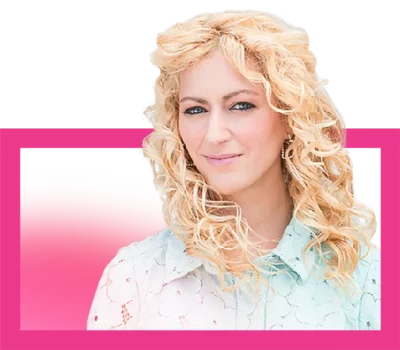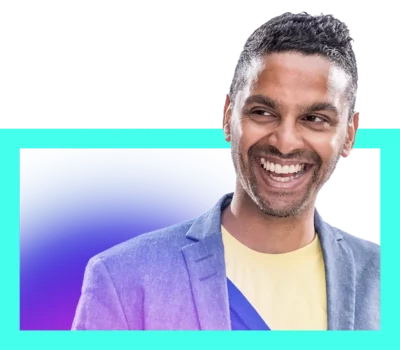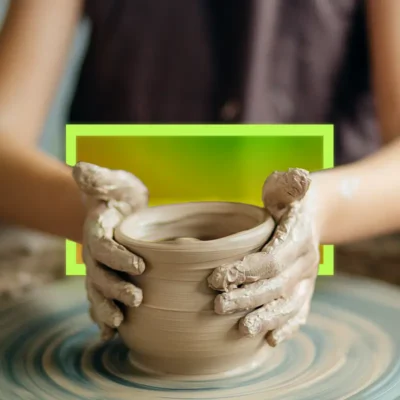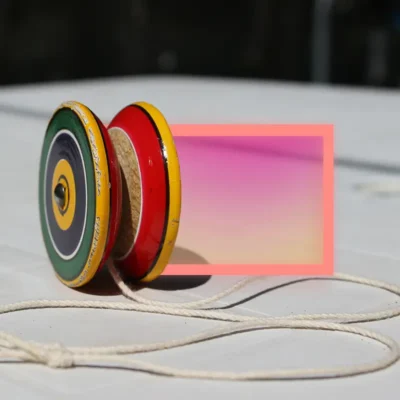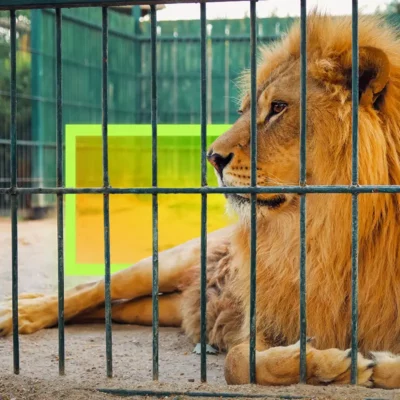Finding my own reflection
Game designer and author Jane McGonigal is an identical twin – and on her sister’s face she can see a window into a parallel life, a different path taken. On this body, identical to her own, there is the curious absence of chicken pox scars and sports injuries – there is an alternate reality to be seen. Or is there? While this thought once made Jane question her own sense of self she now sees something different in the mirror: a lifetime of choices and adventures and stories. Stories that are just hers. Photo credit: Raymond Lui.

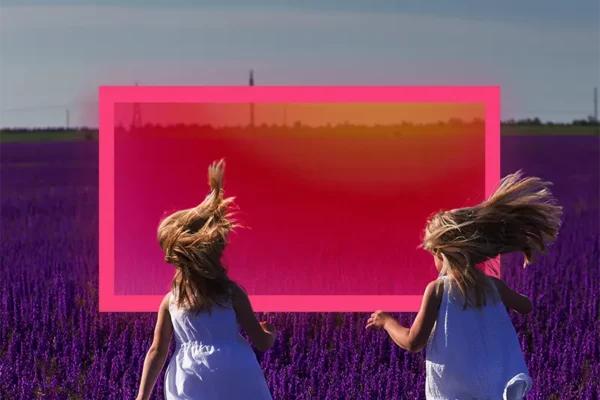
Table of Contents:
Transcript:
Finding my own reflection
JANE MCGONIGAL: Having an identical twin means being able to see someone who looks so similar to you, and to have such an intimacy growing up, that you can really see a parallel universe of choices that can be made or taken.
I think we all have an imaginary twin – that alternate reality version of ourselves who made a different decision, or took a different path, or never had that injury or illness. We can all imagine living those alternate lives and occupying those different bodies. And we can either torment ourselves with that, or we can embrace and celebrate the creativity and intention that goes into being our unique selves.
ROHAN GUNATILLAKE: I’ve loved the work of this week’s storyteller for over a decade now. Her ideas of using all parts of our lives as a playground, of how games can be used to drive personal and social change, have been deeply influential to my work. But in today’s story, Jane McGonigal, game designer and author of Reality is Broken and SuperBetter, shares something very different and very personal.
In this series, we blend immersive, first-person stories with mindfulness prompts to help you restore yourself at any time of the day. I’m Rohan, and I’ll be your guide on this episode of Meditative Story. From time to time, we’ll pause the story ever so briefly for me to come in with guidance to enhance your experience as you listen. I hope these prompts will be helpful to you.
The body relaxed. The body breathing. Your senses open. Your mind open. Meeting the world.
MCGONIGAL: When I look in the mirror, I see the tear first. It’s not where you would expect it to be, not falling from an eye, or running down one cheek. Instead, it rests right between my eyes, or more precisely, between my eyebrows. Such a strange place for a tear. You shouldn’t be there. How did you get there?
I’ve been asking this question since I was six. I’m now 41. I know the answer. This teardrop shape is a scar. One that I made all by myself, by scratching furiously at chicken pox that all the grown-ups told me not to scratch. That one little pox in the center of my face was the itchiest. I couldn’t keep my fingers off it. It scarred into the teardrop shape it keeps today. So yes, I know how it got there. But I guess what I was really asking, for so many years, was, “How did it get on my face, and not on hers?”
Her. My identical twin sister, Kelly. When I say identical, I mean identical. We are mirror images – or at least we started out that way.
It’s a family legend that for the first two years of our lives, our mom and dad kept a green ribbon tied around Kelly’s wrist so they wouldn’t mix us up. That’s how similar we were. “Green for Kelly green,” the color of the lush Irish landscape. See the green ribbon? That’s Kelly. No green ribbon? Must be Jane!
Later, as we got older, she and I wondered if they really had mixed us up, once, twice, a dozen times. What if they’d lost track of that green ribbon? What if they tied it on the wrong wrist? I would ask my sister, “What if I’m really Kelly? What if you’re really Jane?” And we would sit there, pondering deeply, the almost nonsensical question: Am I still the same person, if really, I was supposed to be you?
Looking at our family photo album of pictures taken in the years after the ribbon went away, Kelly and I still have to play a guessing game. “Is that you in the photo? Or is it me?” Even our parents, looking at the same photos, can’t say for sure. On the back of some photos, in my dad’s scratchy handwriting, you can sometimes see written in ballpoint ink the year, followed by the location of the photo, and then one of our names ‘Jane’ or ‘Kelly’ followed by a question mark. Jane? Kelly? Who can say?
Sometimes I think I interpreted that question mark as implying maybe it didn’t even matter which one of us it was. Maybe that’s why the first physical difference felt so important. That chicken pox scar, which I made it with my own two hands. It was the first visible sign, clear as day to anyone looking at us, that we were two different people.
Throughout elementary and middle school, whenever we met someone new, and they would invariably say something like, “Wow! You’re so identical!” I would cheerfully point to my forehead and say, “Aha! But I’ve got this scar!” In other words, “See me! I’m Jane! Please don’t say it doesn’t matter which one is which!”
But that question was always there. What did this scar mean? Why did I get one, and not Kelly? To my child mind, this was SUCH an important question. Why did she get to keep the perfect face, the best possible version of our DNA, while I would now have to be the imperfect version of us? When everyone sees you as the same, the tiniest difference can seem to hold so much meaning.
GUNATILLAKE: You may not be a twin, but can you remember the first time when you felt different from the people around you, your family, your friends? Take a moment to observe how you see yourself relative to someone else you love.
MCGONIGAL: I still try to make meaning of it today. I try to see in that six-year-old version of me the seeds of the unique individual I am now, to see some clues to who Kelly and I would become.
I can say for sure that I’m more strongly goal-oriented than my twin sister. I’m the gamer, I’m the one drawn to competitive sports. I often think of myself in some kind of purposeful battle, whether I’m overcoming a concussion or working with the World Bank to try to stop climate change. Looking back to that early, identity-defining war with the chicken pox on my face, it feels like that scar grew out of some inner drive to fight, to go to battle, to best the virus in some strange, elemental way. I just could not let that itch win.
Meanwhile, my sister Kelly, who blissfully resisted that same impulse, would grow up to earn a PhD in psychology and write a world-famous, bestselling book on the science of willpower. The secrets of which she clearly had already mastered at a very, very young age. Somehow, in those two different outcomes, scar and no scar, we were already becoming something other than identical, pushing against the destiny of our DNA, by making choices, exercising free will, forging our own unique lives.
Or maybe, when the primary way people tell you apart from your twin is through physical scars, then you start to see yourself that way; it shapes your personality. Which comes first: the chicken or the egg? The chicken pox or the itch for adventure?
As we got older, it wasn’t just the chicken pox scar anymore. In high school, I broke my nose – I was hit in the face with a softball pitch. It didn’t heal properly, so now I had a scar and a bump. I still look at her nose and think, “Ah, the nose I could have had.” My brain has scars too, from multiple concussions, one that was pretty serious. If you compared our brains in an FMRI machine, I’m sure you could see that difference, too. In many ways, I feel like the “after” picture in a bizarre “before” and “after” series, where the after is worse for the wear. After this injury, after this illness, after this trauma.
It was our senior year of college, and I was studying in New York City, and Kelly was visiting me from Boston. She stopped by the office where I was interning, met all my colleagues, and as soon as she left, one of them came over to me, looking almost in awe, and said, “Wow, Jane. Your sister is gorgeous. I mean, she is STUNNING!” I wanted to say, “Wait, we’re identical twins. Why are you surprised by how she looks? It was clear what he meant. She was gorgeous, I wasn’t. And I wouldn’t say he was wrong.
Some days, I do feel like I’m just the battered, beat up version of her, or I should say, the battered, beat-up version of us. On good days, I’m at peace with that. I feel like there’s something about my personality that’s just a little more like “bring it on, life, do you worst to me.” And that’s actually, I think, the best part of me. That desire to rise to the occasion, to seek out adventure, to not back off from battle. And maybe that difference was there at birth.
GUNATILLAKE: What aspect of your personality is the best part of you? Dropping any thoughts of self-judgment just for now, can you name a quality that others really appreciate in you. And appreciating it yourself. No judgment, just recognition.
MCGONIGAL: To me, that is a wondrous thing. That two people, born with identical DNA, raised in the same house, by the same parents, breathing the same air, eating the same food, could still somehow be two different people. We talk about the effects of nature versus nurture. But there is something else, a third thing, because despite sharing the same nature and sharing the same nurture, we exerted some unique soul-force and became who we are. Not who we were meant to be, but who we meant to be.
The biggest, most profound difference in that before and after series that I play out in my mind, is that I became a parent and she didn’t. I have twin daughters now myself. it’s like the Einstein twin paradox where you send one identical twin into space, traveling at the speed of light, and the other twin stays on earth, and because of the theory of relativity, the space-traveling twin doesn’t age and comes back to Earth and everybody, including their own twin, is 70 years older.
I think that’s what parenting is like. If you have the same DNA as somebody else and then you become a parent, for every one year they age, you age seven years. It’s just the constant physical and emotional stress, the lack of sleep, the constant caretaking, not having time to eat healthy and exercise as much, always being sick with every cold and virus that your kid catches. There’s a very strange physical sensation, every time I see Kelly now, it’s like looking in a funhouse mirror. A mirror that shows, more than ever, a different version of me, a me with more energy, more ability, a me I could have been, a me my DNA set me up to be.
The act of having a child and becoming a parent, you’re never the same. It changes how your brain works. It changes how your body responds to stress. I think a lot of people feel like when they become a parent, there’s another version of themselves that they left behind to go on this journey. And how do you now accept that you’re not at peak physicality? Or peak productivity? That’s how I feel. I feel very underperforming in some areas of my life right now, because of the care and energy required as a parent.
But then at the same time, I feel like I’m at peak love. Never in my life have I been so loving and put so much time and energy into that, and never in my life have I received so much love back. For me, the love that I’m feeling constantly everyday, the love I get to give and the love I get to receive, and the love that my husband and I get to experience together as a team, it’s worth the battle scars.
Having an identical twin, you really see the toll of your life choices. And it’s not that you regret any of it, but you really are forced to look at how the choices you make change you. I’m sure Kelly has her own experience of that. I’m sure she doesn’t always feel like the more perfect version of me. I’m sure she sees her own scars, her own choices.
My twins are fraternal and nobody mixes them up. One is already 3 inches taller than the other. They have different eye colors. And it’s not just physical. Their personalities are different. One of them is super extroverted. There might be only one other person in the room, but she’s lit up like she’s on the Broadway stage, performing to the last person in the back row of the balcony, every moment of the day. My other daughter is a listener. She asks amazing questions. She approaches the world like a scientist. My twins being fraternal is a totally different experience of twin-ness. I don’t worry about them having to forcibly show the world that they are two unique people
I don’t have to wait until one of them has a scar. They are already their own fully-formed unique selves – and maybe that’s something that I didn’t understand about my own twin-ness. What I know about them, that I didn’t know about myself, is that the differences I see in their personalities and bodies may be as temporary as the Kelly green ribbon my parents put on my sister’s wrist. I’m not going to define them in comparison to each other, because they’re always changing, always creating and recreating themselves.
GUNATILLAKE: Feel your feet on the ground. Feel the air on your face. Watch the fluidity in your own self right now, sensations coming and going, thoughts coming and going. Is anything really fixed?
MCGONIGAL: Having an identical twin means being able to see someone who looks so similar to you, and to have such an intimacy growing up, that you can really see a parallel universe of choices that can be made or taken.
But having an identical other didn’t define me, because I think we all have an imaginary twin – that alternate reality version of ourselves who made a different decision, or took a different path, or never had that injury or illness. We can all imagine living those alternate lives and occupying those different bodies, and we can either torment ourselves with that, or we can embrace and celebrate the creativity and intention that goes into being our unique selves and bringing our unique selves into existence every day, physically, mentally, and in our relationships to others.
We don’t have to live in a state of comparison to our imagined possible selves, or to anyone else for that matter. However you came to be who you are today, there is no other version of you. You created yourself, and no one else – identical DNA or not – could ever replicate the unique and wondrous version that you created, choice by choice and scar by scar and adventure by adventure. What I’ve learned is you can’t look to anyone else for a reflection of yourself. Your story is in your mirror, in your body, in your home, in your truth.
Rohan’s closing meditation
GUNATILLAKE: To help me deepen my understanding of meditation, I spent a fair amount of time in my 20s traveling around the world learning from different teachers and styles. And when in Thailand I came across the saying: “same, same but different.” It’s one of those phrases which you hear everywhere, and even see on the occasional t-shirt. Jane’s story brought it back to my mind. Her and her sister: same, same but different.
In the Zen tradition there’s the saying: not one, not two. Not one, not two. I love the mystery of those words, designed to point to the interdependency of things. And that’s the idea we’re going to play with in this short practice together. And the interdependence we’ll start with is that of body with mind, mind with body.
So letting your body be however it is. And being interested, gently interested into what sensation or area of sensation – right now in this moment – is most prominent. There’s no wrong answer. What sensation is the most prominent for you in the body?
Letting go of that now. Taking a breath. Aware and alert. Taking another breath if you like.
Now, letting your mind be however it is. And being curious, gently curious into what mood or mindstate is present. Asking the question, sensing the answer, giving the mindstate a name. For me it’s a subtle kind of joy as I imagine you listening to this. What is it for you? There’s no wrong answer. What’s your mind like right now? Give it a name.
Now, can you sense into the relationship between body and mind? Their interdependence. The body, it’s posture, it’s stance, it’s relaxation or lack thereof, a reflection of mind. Your mindstate is influenced in turn by your body and your environment. Mental, physical, not two, not one.
You can play with this by smiling. Smile, even if you don’t feel like it. Let your face, your body, lift up a smile. And notice any positive movement in your mind, any thoughts, any feelings.
Letting that go. And now bringing to mind a happy memory. The happiest you can possibly remember. And notice how your body responds. Mind changing body, body changing mind. Letting that go now too.
Ok. Now let’s take that interdependence to the next level. And see if you can hold both body and mind in your awareness at the same time. Aware of how your body is as a whole. Aware of how your mind is. Together. United. Mind and body united in awareness, held in awareness.
Body and mind. Identical twins. Separate but not really. Not one, not two. The knowing and that which is known, not two, not one. Interdependent. And full of life. A life full of choices, perhaps some scars. And with a bit of luck, adventure.
